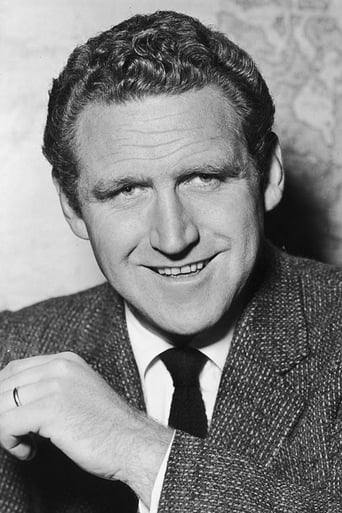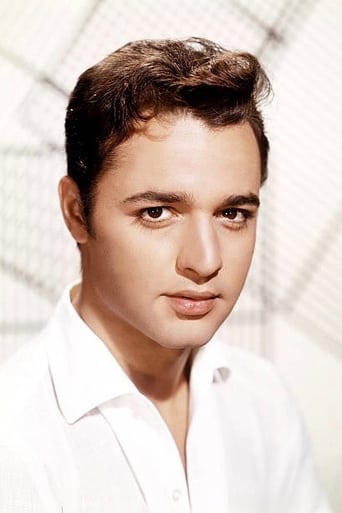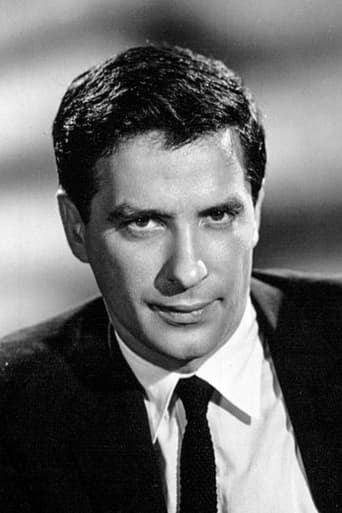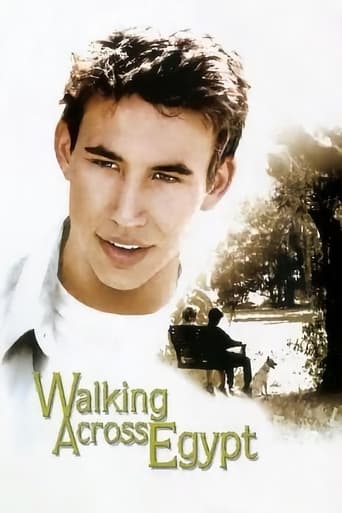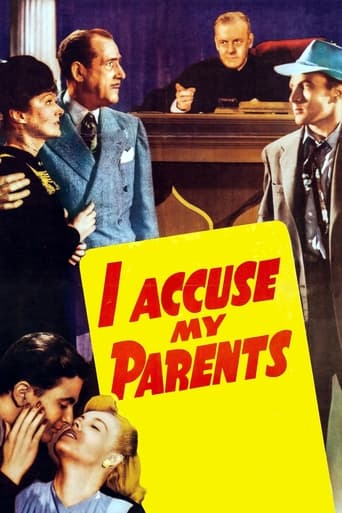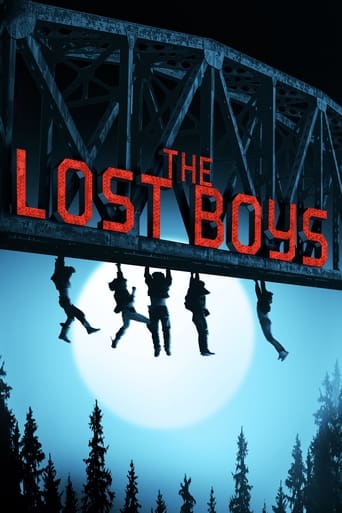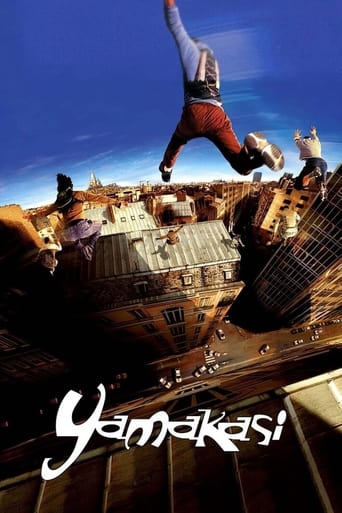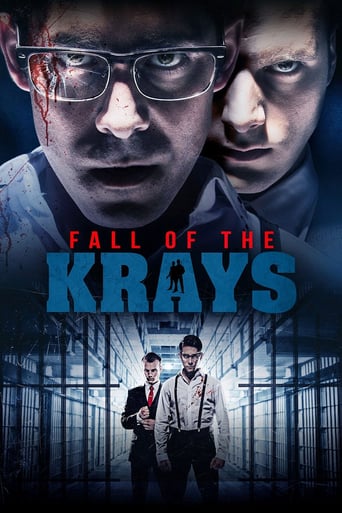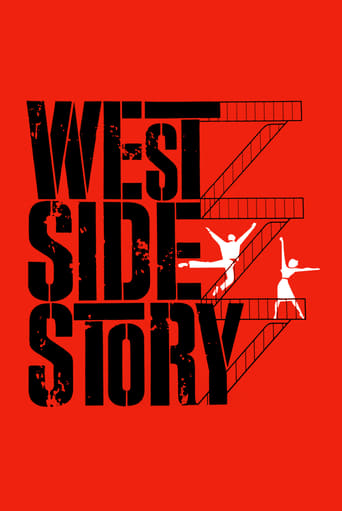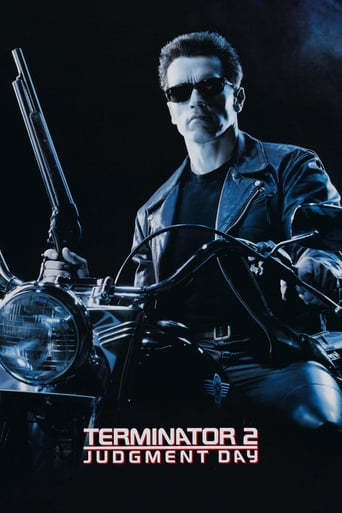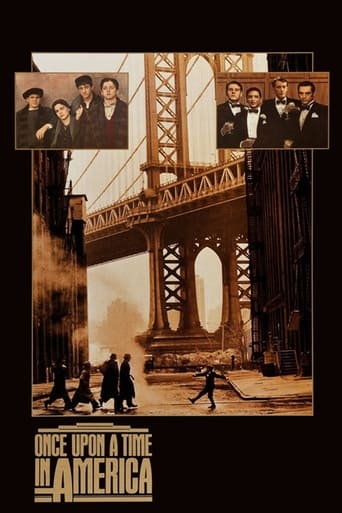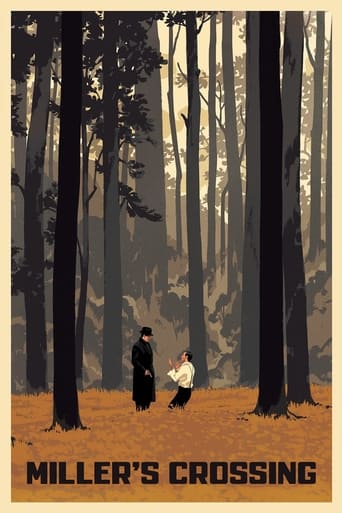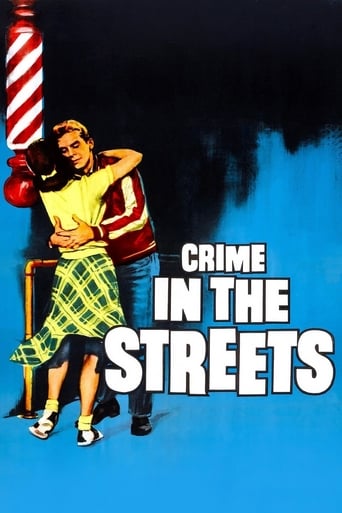
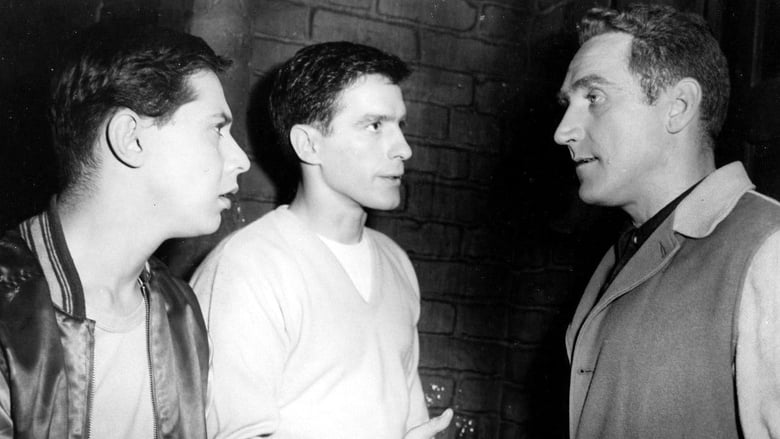
Crime in the Streets (1956)
A social worker tries to end juvenile crime by getting involved with a street gang.
Watch Trailer
Cast


Similar titles
Reviews
All aboard for cheesy sets and a lot of unconvincing talk, talk, talk with the usual stock characters and stock situations.James Whitmore, badly miscast, is a dead weight. Cassavetes is all sub-Brando method acting, but Sal Mineo is bit more with-it than usual.Nonetheless, the only really impressive performance is offered by Mark Rydell. On the negative side, production values are extremely crummy. Don Siegel, Sam Leavit, amd Franz Waxman should hang their heads in shame for respectively contributing such uninspired direction, plodding photography, and a pedestrian music score.And as for art director Serge Kriznan, he should be drummed out of town. Or maybe the shabby sets were entirely the fault of penny-pinching producer Vincent M. Fennelly?
A social worker tries to tame a street gang. Cassavetes is pretty good in his second film credit, although he was a bit old at 26 to be playing a teen. Rydell is quite creepy in his film debut as a psychotic gang member who can't conceal his glee at the thought of committing murder. Rydell, like Cassavetes, went on to become a director. His second film role would not come until 1973 in Robert Altman's "The Long Goodbye," when he played another frightening character. Mineo plays a character not unlike the one had just played in "Rebel Without a Cause." In his follow-up to "Invasion of the Body Snatchers," Siegel creates a gritty atmosphere but stresses the melodramatics.
I don't want to elaborate too much on what's already been said, but 1956's "Crime in the Streets" becomes claustrophobic very quickly because of the shabby, back-lot "New York street" that screams artificial 1930s Hollywood set a la "Dead End" and "Scarface." Since this is an Allied Artists film, I'm guessing it was shot at the old Monogram Studios on Sunset Boulevard in East Hollywood, which was shabby even in the 1930s. Perhaps Don Siegel was looking for claustrophobia and delapidation to enhance the atmosphere, but more likely they were simply a product of a low budget. (After all, Siegel had already used the real-life streets of Hollywood and the nearby town of Sierra Madre to great effect a year earlier in "Invasion of the Body Snatchers.") Though no source material is given for "Crime in the Streets" except for the original teleplay, it owes quite a lot to Hal Ellson and other social workers-turned-writers who cranked out top-selling novels in the late '40s and early '50s, such as "Duke" and "The Golden Spike," that explored the tribulations of growing up in poor, urban, ethnic American neighborhoods. Also unacknowledged is Clyde McPhatter and the Drifters' rhythm and blues hit, "Such a Night," which provided Mark Rydell's character (clearly the movie's most interesting) with the "ba-dooby-dobby-doo" riff that became a jazz motif when the boys were awaiting their big crime in the alley.
From the moment you see street thugs (John Cassavettes, Mark Rydell and Sal Mineo to mention a few), you can feel the anger pouring from the streets and onto the screen. They all have different issues, but it all boils down to the same thing-they hate everything about their lives, their families and their community. Cassavettes, who was a bit older than the late teen's he's supposed to be (he was 26), is the angriest of them all, although there are a few others who seem to be gleefully happy to cause the tension they do. When Cassavettes and his gang are caught in a fight with their rivals, a fed-up neighbor (Malcolm Atterbury) goes to the police, which results in the arrest of one of their pals. Later, the man slaps Cassavettes, and that causes him to begin to plot the man's murder. James Whitmore, as the local social worker determined to help the boys as much as he can, is like a substitute father figure, and even though they won't admit it, the young men respect him. When it comes apparent that Cassavettes is planning revenge, it's up to Whitmore to step in before it's too late.These kids aren't living the middle class life of the rebels without a cause of that 1955 James Dean/Sal Mineo/Natalie Wood classic. They are poor, fairly uneducated, and with little or no hope of making it out of their situations. Cassavettes' mother (Virginia Gregg) is a tired waitress who neglected him after giving birth to his much younger half-brother (a wonderful Peter J. Votrian) who hasn't been corrupted yet but is scared of his dangerous sibling whom he adores. Mineo is the baby-faced youngest member of the gang who is desperate for acceptance. One key scene has Mineo in a confrontation with his worried father (Will Kuluva) who actually acts more like an overprotective mother in his display of love for his son. Soap vet Denise Alexander plays Mineo's sister who is tired of the violence and also tries to get through to Cassavettes.This film gives a really mean looking portrayal of the life of these kids. Just a year after "Rebel Without a Cause" and "The Blackboard Jungle", teen gang films were catching on, but few of them really were anything more than exploitation films. This is not one of those, but a serious look at a problem that still exists today. Cassavettes and Whitmore give the most intense performances. My only real issue with the film was the sterilized ending which doesn't really complete the story, but takes it into a new direction the audience doesn't get to see.


